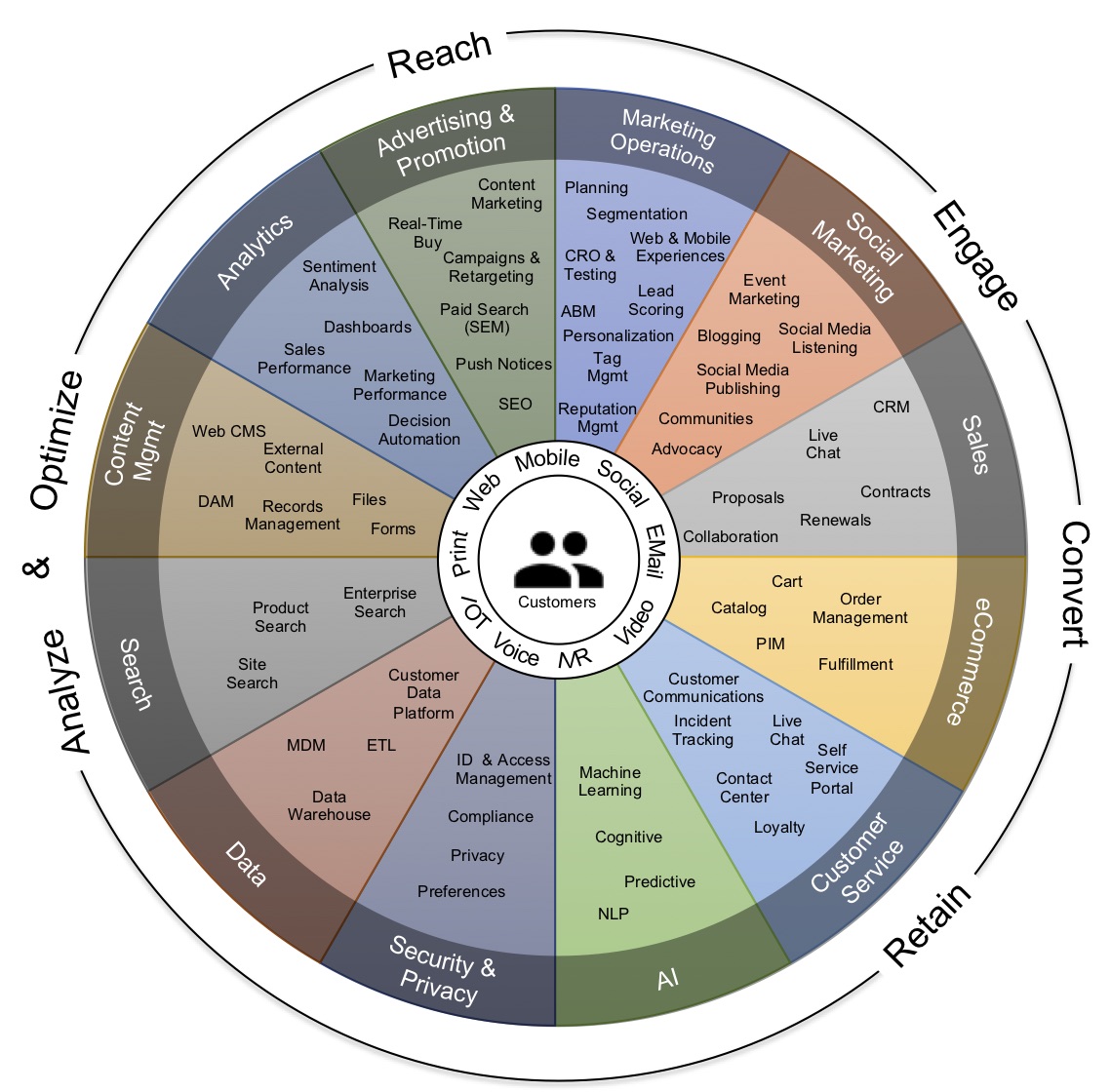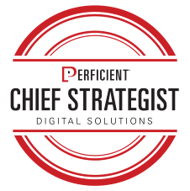Today we are introducing our Customer Experience Capabilities Model. This model shows a different view of our CX Platform Framework that we published in a July 2018 blog post Why you need a CX Platform Framework. Our CX Capabilities Model is shown in the picture below and can be used for a variety of purposes. First we’ll describe the model and then discuss the ways that the model can help you with your customer or digital experience efforts.

Perficient CX Capabilities Model
What Is The CX Capabilities Model?
Our capabilities model shows the typical capabilities companies use to create and manage customer experiences. As a result, there are several major components to the model:
Customers At The Center
As should always be the case, we put customers at the center of the model, so we maintain focus on them.
Channels and Devices
We connect with our customers through a variety of channels and devices they use. Here we use a sampling of channels and devices. Depending on your customers, you might want to include other channels, like television, kiosk, etc.
Customer Acquisition Cycle
Jumping to the outside of the model, we included a typical customer acquisition cycle that starts with reaching out to customers and eventually retains them as customers. We also included the important steps of analyzing and optimizing the experience for the next cycle. We know that customers don’t follow this cycle in this exact order every time, but it serves to highlight common steps.
Departments Involved In Delivering Customer Experiences
Within the first outer ring of the model, we identify typical areas of the company that are involved in developing and delivering the customer experience. Marketing groups are at the top, including Advertising & Promotion, Marketing Operations and Social Marketing. Next around the circle are the Sales and eCommerce teams involved in the finalizing the sale. Following that is Customer service, who should be concerned with keeping the customer. The remaining areas usually provide a support role for the experiences, including AI, Security, Data, Search and Content Management. You may not organize exactly like this, but we can tailor the model to each customer.
Capabilities Involved In Customer Experiences
Finally, inside each of the pie slices we identify the typical capabilities used to create these experiences. Many of the capabilities will be used for non-digital experiences, but we are focusing our customers’ digital experience. While each actual company may vary in the way they organize their internal teams, we aligned the capabilities shown based on what we typically see in most industries.
So, How Can This CX Capabilities Model Help You?
Why did we create this model and how can it help you? In this section we describe several ways you can use the CX Capabilities Model within your organization.
A Great Overview of All Areas Involved In CX
Our CX Capabilities Model provides a great overview of all the areas involved in delivering great experiences. Too often companies become siloed in organizational departments and nobody can see the overall picture of customer experience. This model provides a quick and easy view of the capabilities across departmental boundaries. For example, if you are in Customer Service, you can quickly see all the upstream capabilities that eventually lead to a customer calling you. Likewise, if you are in promotions marketing, you can be aware of the other people and systems that need access to your content.
Identify the Capabilities You Have and May Need
You can survey your company’s existing capabilities to understand what you have and what might be missing. Say you have a great web content management system, but you’re not sure about Conversion Rate Optimization (CRO) & Testing. You can check with the Marketing Operations people to see if they have this capability. If not, then maybe that’s something you need to add to your set of tools.
Understand How Capabilities Connect With Each Other
We don’t show the connections between capabilities in the model as it would become a visual mess. However, you can quickly identify connections and try to understand overlaps and dependencies between them. For example, many campaign systems will include a customer data platform capability. Likewise, an eCommerce platform may contain its own customer data capabilities. When you identify overlapping capabilities, you can take steps to consolidate systems to reduce dependencies. Or you can create integrations between systems that eliminate overlaps.
Eliminate Redundancies in Your CX Systems
Many companies implement separate systems for almost every capability listed in the model. This typically happens organically, based on immediate need of a siloed department. For example, the operations team decides they need CRO & Testing, so they buy a service or system that provides them that capability. Perhaps they didn’t realize that one of the existing marketing systems also includes CRO & Testing. So, one way to use our model is to understand all the existing systems and the capabilities each provides so you can eliminate redundancies.
Evaluate Vendor Platforms Properly Before You Buy
As you evaluate new systems, you need to understand the capabilities you want to assess. If you are evaluating Digital Experience Platforms, for example, you should determine how many of these capabilities are included in the platform versus what you need. One vendor’s platform may include campaign tools, content management, analytics, AI, etc. while another vendor’s platform is missing campaigns. But if you already have a campaign tool you like, why pay for another system that duplicates what you have?
Coming in future posts
We’ve only described the CX Capabilities Model at a very high-level above. In future posts, we’ll take a look at specific areas within the model and talk about how you can use the model in more detail.

